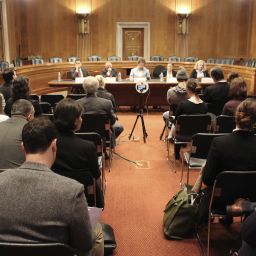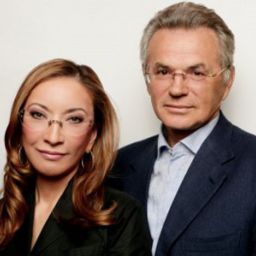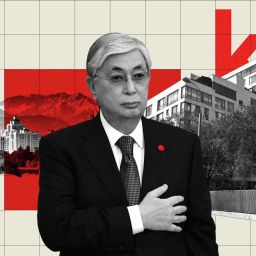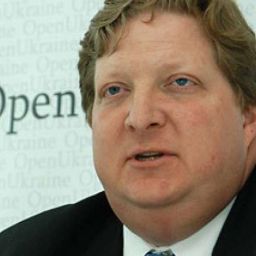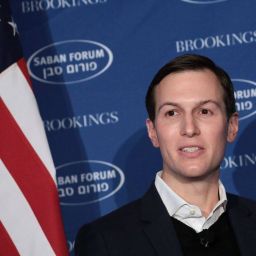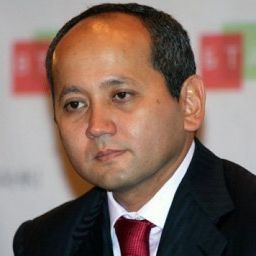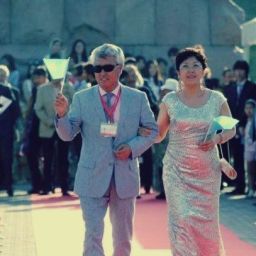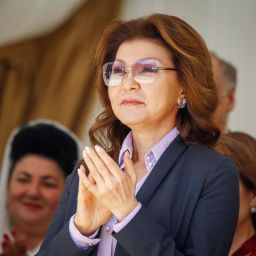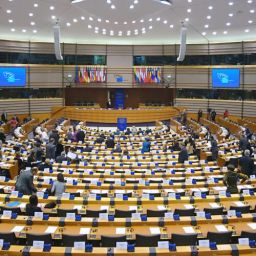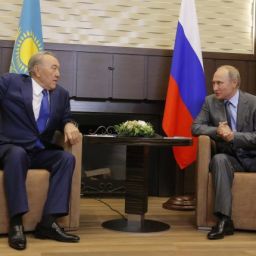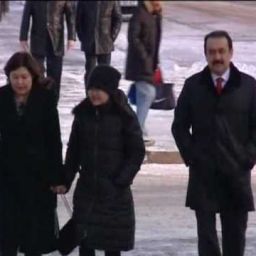The unofficial third wife of Kazakhstan’s former president Nursultan Nazarbayev received $30 million apparently for almost nothing, leaked offshore documents reveal.
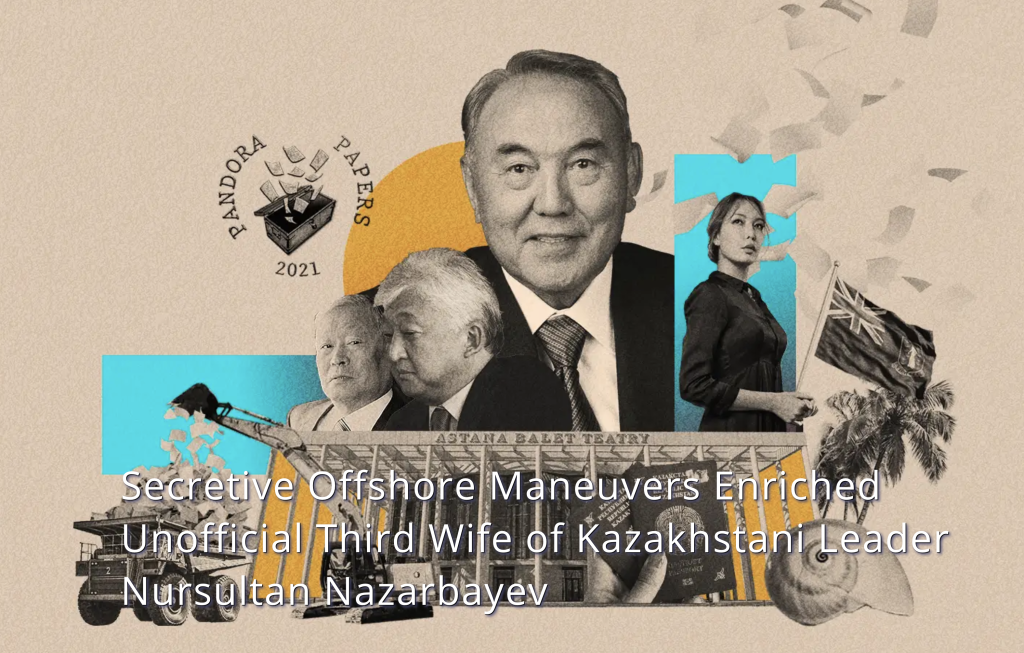
Now 40 years old, Kurmanbayeva is the artistic director of two state-run dance institutions and owns several firms involved in ballet and national dance. But whatever income she earns from her cultural work must pale in comparison to the fortune she received from the depths of Nazarbayev’s inner circle.
The payment of $30 million followed a number of share transfers involving six offshore companies, all but one registered in the British Virgin Islands (BVI). Because the territory is a notorious haven for offshore secrecy, the transaction would have remained hidden forever — if not for the Pandora Papers.
The set of millions of offshore documents were leaked to the International Consortium of Investigative Journalists and shared with OCCRP and other media partners around the world, providing an inside look at how powerful and wealthy people use secretive shell companies to move money.
In the Kurmanbayeva affair, the documents reveal the involvement of two men long rumored to be Nazarbayev’s confidants: Oligarchs named Vladimir Ni and Vladimir Kim who made their fortunes in Kazakhstan’s notoriously corrupt natural resource sector.
The $30 million payment to Kurmanbayeva was structured as a sale, in which she gave up her stake in a mysterious BVI company that appeared to do no business. She received the money two months after Ni’s 2010 death from a company taken over by his daugher; Kim was a witness to the payment.
Reporters reached out to Nazarbayev, Kim, the Ni family, and Kurmanbayeva for comment on this story. None responded.
The Birth of Two Fortunes
An ethnic Korean, Ni was born in Soviet Russia and moved to Kazakhstan as a young man to work in government. In the mid-1980s, he served as Nazarbayev’s assistant when the older man became the Soviet republic’s prime minister.
Ni remained near the top after the country’s independence, first responsible for Nazarbayev’s schedule and other administrative presidential affairs and then for managing property belonging to the presidential apparatus.
This placed him near the seat of power just as Kazakhstan’s Soviet-era mining corporations entered private hands. Ni is said to have led the mid-’90s privatization of Zhezkazgantsvetmet, one of Kazakhstan’s leading mining companies — including the sale of a stake to Samsung, the Korean multinational.
During this period, he opened the door to the company for Kim, his younger protege. The two men had likely known each other since the Soviet era as part of Kazakhstan’s close-knit ethnic Korean community.
After the company was transformed into Kazakhmys, a new largely private mining giant, Ni retired from government service and joined its board of directors. By 2000, his mentee Kim had grown to new heights, becoming the company’s president and board chairman. (The two men later switched places, with Ni becoming chairman instead.)
Both Samsung and the Kazakh government started selling their shares in Kazakhmys in 2001, without disclosing the buyers. It was not until 2005, when Kazakhmys went public in London, that it revealed the companies that owned it. Several years later, Global Witness, an anti-corruption group, used this information to discover that Kim was its largest shareholder, holding nearly 39 percent.
He never explained in detail how he could afford such a stake.
“Of course, no one gave me shares of Kazakhmys. I started purchasing them from the very beginning,” he said in a rare 2007 interview, “because I believed in the success of the reforms carried out by our president.”
He did, however, make a generous gift to his mentor. In 2006, Kim donated a 2.5 percent stake in the company to Ni, reportedly for his “great services to the company.” The value of this package was estimated at £135 million.
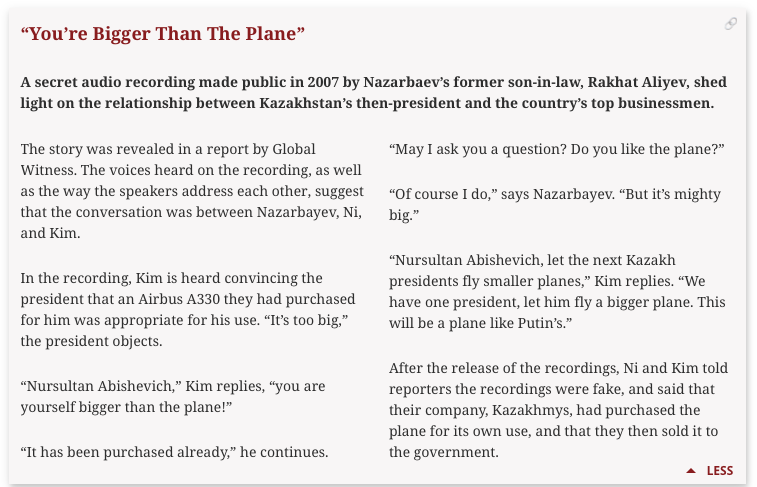
A secret audio recording made public in 2007 by Nazarbaev’s former son-in-law, Rakhat Aliyev, shed light on the relationship between Kazakhstan’s then-president and the country’s top businessmen.
The story was revealed in a report by Global Witness. The voices heard on the recording, as well as the way the speakers address each other, suggest that the conversation was between Nazarbayev, Ni, and Kim.
In the recording, Kim is heard convincing the president that an Airbus A330 they had purchased for him was appropriate for his use. “It’s too big,” the president objects.
“Nursultan Abishevich,” Kim replies, “you are yourself bigger than the plane!”
“It has been purchased already,” he continues. “May I ask you a question? Do you like the plane?”
“Of course I do,” says Nazarbayev. “But it’s mighty big.”
“Nursultan Abishevich, let the next Kazakh presidents fly smaller planes,” Kim replies. “We have one president, let him fly a bigger plane. This will be a plane like Putin’s.”
After the release of the recordings, Ni and Kim told reporters the recordings were fake, and said that their company, Kazakhmys, had purchased the plane for its own use, and that they then sold it to the government.More
The Mysterious $30 Million
As is common for very wealthy people from this part of the world, Kim and Ni owned a number of offshore companies for various reasons, some unknown.
But one of them is of particular interest: In July 2008, Ni became the shareholder of a company registered in the BVI called EMES Holding & Finance (in which Kim was also involved ). Unexpectedly, Ni’s partner in this company was a 27-year-old woman not known for any great wealth: Nazarbayev’s unofficial third wife, Kurmanbayeva.
EMES is not known to have done any business or to have owned anything valuable, and its purpose was unclear. But steps appear to have been taken to keep it a secret: Just weeks later, she acquired another generic offshore company, Ladra Services, to which her shares in EMES were transferred.
Over the next two years, the composition of EMES’s shareholders changed several times for unclear reasons. By March 2010, EMES was owned by two offshore companies: Kurmanbayeva’s Ladra Services and another one owned by Ni.
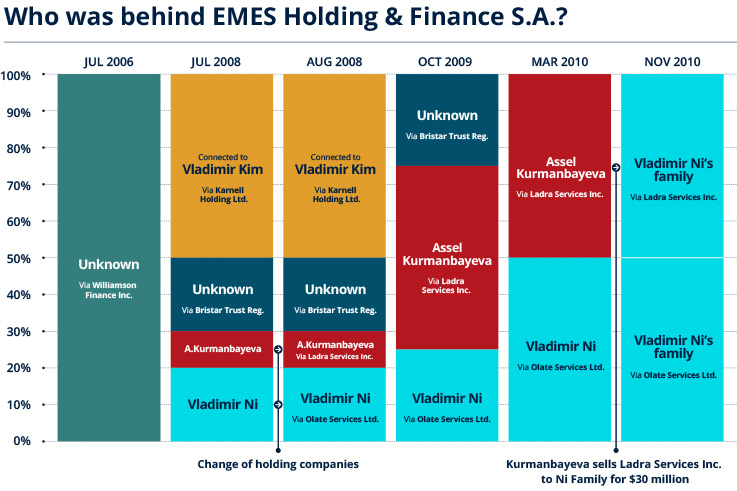
When Ni died that September, the arrangement appears to have reached some kind of conclusion. Just two months after his death, another BVI company called Godel Partners paid Kurmanbayeva $30 million for Ladra Services (and the 50 percent stake in EMES it held).
Unlike the other companies in this saga, Godel’s ownership structure contains an extra layer of secrecy. The company was owned by a so-called nominee firm, explicitly designed to stand in as the owner for hundreds of companies and keep their ownership a secret.
However, three separate pieces of evidence connect Ni, Kim, and Kurmanbayeva:
- Kim was a witness to the deal, with his signature, like Kurmanbayeva’s, appearing on the document.
- When Godel was dissolved seven years later, among its beneficial owners were Ni’s daughter Viktoriya and her husband.
- About two years after Ladra Services was purchased from Kurmanbayeva, the company divested itself of its shares in EMES — which went to a company owned by Ni’s daughter.
A Ballet and a Banquet Hall
Though Kurmanbayeva’s closeness to the Leader of the Nation has been known for years, very little about her life has been reported in the Kazakhstani press.
Practically the only available information is presumed to have come from Rakhat Aliyev, the former husband of Nazarbayev’s eldest daughter Dariga, who was already in exile when he is believed to have published passport photos of Kurmanbayeva and her children during his feud with the Nazarbayev family. (Aliyev died in an Austrian jail in 2015, allegedly by suicide.)
The first and last time Kurmanbayeva and Nazarbayev were publicly seen in the same place was when she was among hundreds of people who attended his last annual address to the nation as president at his residence in 2018.
But Kazakhstani company records show that the president and his unofficial third wife also had business connections.
As it turns out, Kurmanbayeva was the founder of a company that established the Astana Ballet in 2012.
According to the group’s website, it was founded “at the initiative of the First President of the Republic of Kazakhstan, Nursultan Nazarbayev.” His foundation took over the company less than a year later, and then passed it on to the government. Kurmanbayeva remains involved as its art manager.
Strangely, Nazarbayev’s foundation also dealt with Kurmanbayeva on a very different project. For two months in 2013, it owned a company called Astau that Kurmanbayeva had founded in 2006. Then she became its owner again.
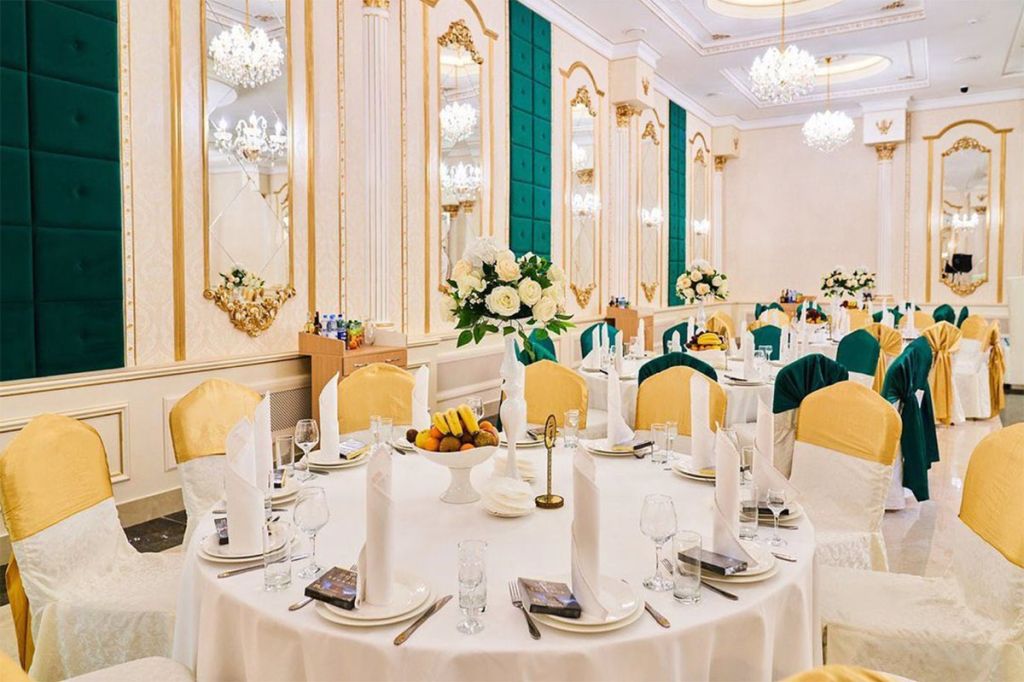
The соmpany owns and operates a banquet hall, spa, and beauty salon in Nur-Sultan city center.
Judging by its tax records, it does very little business. But its Instagram account shows off a sparkling banquet hall, happy guests, and dishes laden with food.
